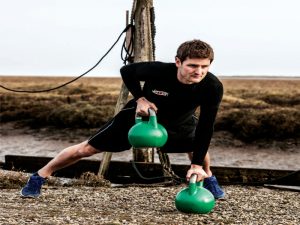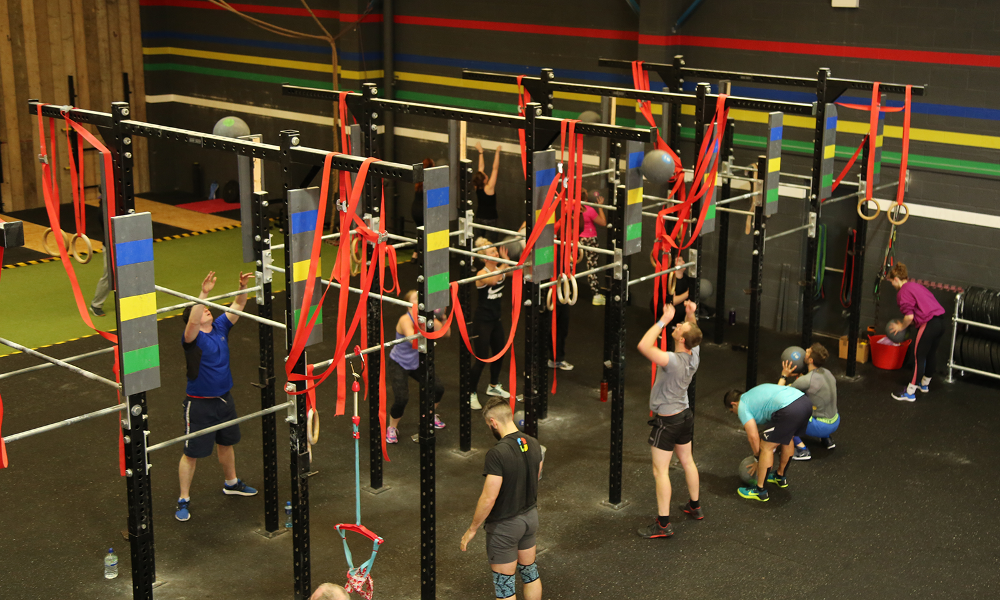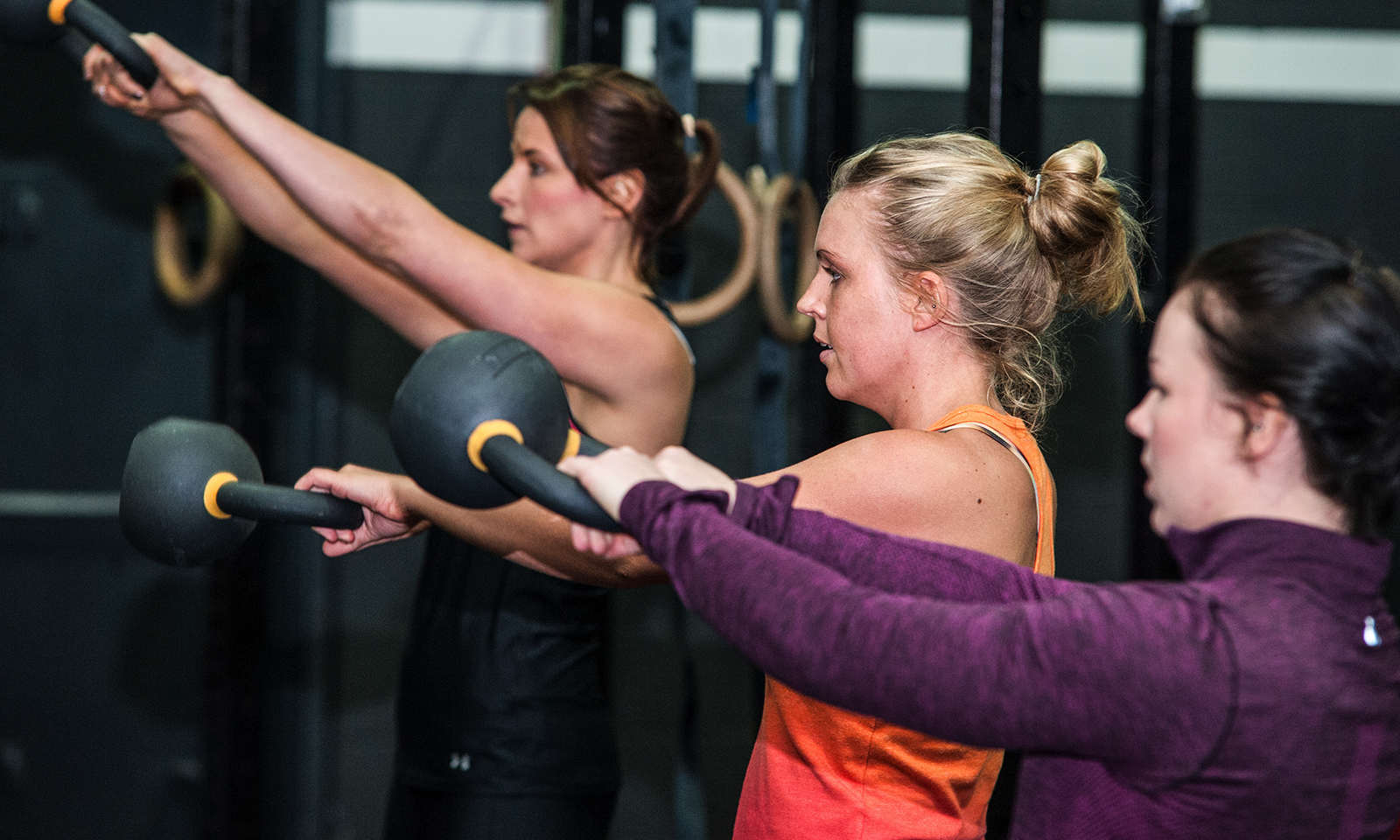Bust Fitness Myths With Mark Laws
Share
Mark Laws is back busting myths and injury-proofing your joints. Listen up!
Myth: Some CrossFit exercises are dangerous
 Reality: I am not part of the CrossFit movement, nor am I a hater. I have never taken part in a CrossFit session. In fact my only involvement was wearing some CrossFit trainers for 12 months that I was given. However, it really irritates me when people claim that certain exercises or techniques are ‘dangerous’ (this applies to all fitness disciplines, but CrossFit seems to get the most amount of bad press). I will go as far as to say that there is NO such thing as a dangerous exercise. There are only dangerously prescribed exercises. Let’s look at the kipping pull-up technique which is commonly prescribed within the CrossFit fraternity (Google it if you’re not sure what it looks like). The participant uses momentum from the legs to get the head up to the bar and can often resemble a fish out of water desperately trying to get back where it came from. Due to the circular motion of the body and the increased momentum there is a huge amount of force for the shoulder and the gripping muscles to contend with. A lot of people get injured attempting this technique and it comes under a lot of scrutiny as a result. There are plenty of people who use this technique that don’t get injured, so it isn’t an absolute rule that everyone will 100% get injured. Take a look at the gymnasts in Rio performing on the Rings or the High Bar and you will see very similar techniques being performed every few seconds… with no injuries.
Reality: I am not part of the CrossFit movement, nor am I a hater. I have never taken part in a CrossFit session. In fact my only involvement was wearing some CrossFit trainers for 12 months that I was given. However, it really irritates me when people claim that certain exercises or techniques are ‘dangerous’ (this applies to all fitness disciplines, but CrossFit seems to get the most amount of bad press). I will go as far as to say that there is NO such thing as a dangerous exercise. There are only dangerously prescribed exercises. Let’s look at the kipping pull-up technique which is commonly prescribed within the CrossFit fraternity (Google it if you’re not sure what it looks like). The participant uses momentum from the legs to get the head up to the bar and can often resemble a fish out of water desperately trying to get back where it came from. Due to the circular motion of the body and the increased momentum there is a huge amount of force for the shoulder and the gripping muscles to contend with. A lot of people get injured attempting this technique and it comes under a lot of scrutiny as a result. There are plenty of people who use this technique that don’t get injured, so it isn’t an absolute rule that everyone will 100% get injured. Take a look at the gymnasts in Rio performing on the Rings or the High Bar and you will see very similar techniques being performed every few seconds… with no injuries.
An exercise, or any activity for that matter, is only dangerous if you are not capable of doing it! Whether it be kipping pull ups, sword swallowing, juggling with knives or catching live alligators, they are only dangerous if you have no idea what you are doing. The problem occurs when someone with limited/no experience is prescribed a particular exercise purely because that is what’s on the workout instead of being regressed to a more basic version that is better suited to their capabilities.
The exercise is not dangerous. The fool who prescribes it to somebody that has not earned the right to perform it a certain way is the danger that needs to be avoided at all costs.
5 ways you can start to injury proof your joints…
WRIST
For handstands, Olympic lifts and a host of gymnastic movements it is crucial that the wrists are prepared. A nice flexibility drill is to get onto all fours and externally rotate the wrist so that the fingers are pointing towards your thighs – push your backside backwards to increase the stretch. If you are ready for more then try a push up on the back of your wrists – maybe start on your knees to make sure you are ready.
Shoulder
Take a towel in your left hand and hold it behind your head (with the elbow pointing up to the ceiling). Reach your right hand around your lower back and take hold of the bottom of the towel. Then work the fingers of both hands towards each other until they are as close to touching as your shoulders will allow. Repeat this both ways around and gradually the shoulder will become more flexible and mobile.
Hip
Start at the top of a push up and step your left foot up towards your left hand. Once the foot lands flat then drop your hips down towards the floor and lift your chest up towards the wall to increase the stretch at the hip. Use your little finger as a guide to see if one foot can reach further than the other – this test can also demonstrate that your hip mobility is improving.
Ankle
Along with the wrist, the ankle is one of the most ignored yet most important joints. Lie on your back with your feet flat against the wall – one at a time pull your toes up towards your head and hold, attempting to get the toes as far away from the wall as possible. Then stand with the toe of one leg touching the wall – push your knee forwards until it touches the wall. If successful then move the foot back an inch at a time, ensuring that the entire foot stays flat on the floor. The further you can get from the wall the more mobile the ankle is.
Spine
Lay flat on your back and pull your heels up to your backside. Push your hips up towards the ceiling and turn onto your left shoulder so all of the weight is held up by both feet and the left shoulder – at the same time reach your right hand as far above your head as possible. This will start to mobilise the upper back (thorasic region) as well as stretching the lats and switching on your glutes so well worth a try.

















FOLLOW BESTFIT